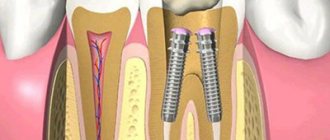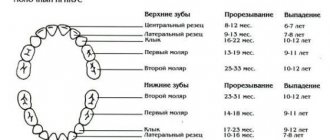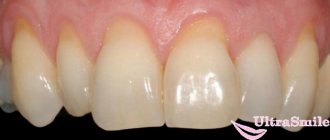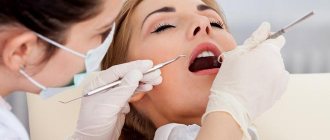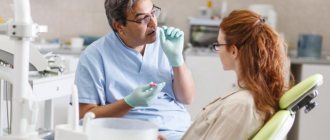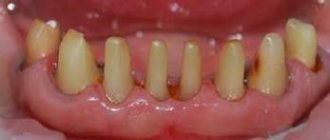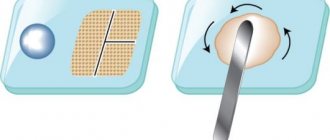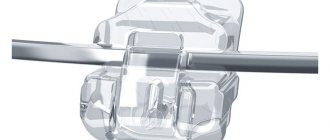Over time, dental adhesives have changed—and only for the better. With each new generation, dentists justifiably benefit from improved adhesion quality and more convenient and simpler application techniques. The latest generation of adhesive systems - also known as universal adhesives - are considered to be the new breakthrough in the field of dentistry today.
"Adhesive" evolution
Dental adhesive systems have evolved significantly in two main ways: effectiveness and ease of use.
“Dental adhesives have evolved from 4-bottle systems to single-bottle systems,” says Dr. John O. Burgess (Dr., John O. Burgess, DDS, MS, Professor and Dean of Clinical Research at the University of Alabama, Birmingham).
“Basically, adhesives have become much simpler and easier to use, easier to understand, and faster to work with. Speed of application is a major advantage because it reduces the time window for possible contamination by blood or saliva, which can lead to a significant reduction in adhesion strength. The faster we can apply the adhesive and cure it, the more likely we are to create a strong, long-lasting restoration.”
Simplification, reliability and convenience in creating adhesive restorations go hand in hand in the practice of a dentist, allowing them to also work with various dental materials.
“The evolution of adhesives has created formulations that allow us to achieve adhesion not only to enamel and dentin tissues, but also to metals, zirconium, ceramics, which makes such adhesive systems multifunctional in terms of use and application with various materials,” states Dr. Burgess. “These capabilities of universal adhesives allow them to be used in direct composite restorations and in non-direct restorations. When you need to create a particular restoration, these systems will be as easy as possible - easy to use. The more you work with universal adhesives, the more accustomed you become to them and the more you understand their convenience and effectiveness.”
Adhesive systems for direct and indirect restorations
Dentists use adhesives for two types of restorations—direct and indirect. The methods of application in both cases are different, so the doctor needs to understand how to work with the adhesive in each situation.
Application of adhesive
Adhesion in the case of a direct restoration is the procedure of “sticking” a composite material of a specific shade that matches the shade of the tooth being restored. In this case, the procedure is performed to recreate the function or shape, or to restore the color of a damaged tooth. Once the composite material is placed into the tooth cavity and shaped into the desired shape, it can be polymerized.
Adhesion in the case of indirect restorations is made with restorations that were created in the laboratory or using CAD/CAM technology in the dentist's office. An impression of the required damaged tooth(s) is created, or electronic digitization of the required area is performed using an intraoral scanner. Next, the data or impressions are sent to the dental technician’s laboratory and he creates an “indirect” restoration for the patient. The finished work is returned to the dentist, who installs it in the patient’s mouth.
Dr. Burgess also reminds us that most dentists use different adhesive systems. However, new adhesives - universal - can be used for both direct and indirect restorations
“If you look at survey data among dentists, most of them use different adhesives in their daily practice,” states Dr. Burgess. “A separate adhesive is used for indirect restorations - when installing crowns, bridges, inlays (inlays/onlays) - and a separate adhesive is used for direct restorations - when using composite materials, Classes I, II, III, IV according to Black.”
“...universal adhesives can be used to create both direct and non-direct restorations...”
Operating principles, connection quality
Let's summarize the concept of adhesive: what is it, how does it work? The adhesive is the glue itself, and its ability to stick is called adhesion. Stickiness is affected not only by the composition of the substance, the type of surface, but also by the ambient temperature, humidity level, and thickness of the applied layer. The quality and durability of the future connection depends on all of these parameters.
The natural basis is adhesive compositions based on starch and algae extracts. They are systems of organic components that are safe for nature and humans. But they are not considered durable because they are susceptible to biological bacteria (fungus, mold).
Synthetic products are obtained based on soluble polymers. It differs in the method of crystallization, adhesive strength, polymerization period, and tensile strength. For example, some compositions set immediately, while others remain plastic for a long time, providing a repeated gluing and peeling process. In each case, they remain inert to the effects of bacteria and are resistant to ultraviolet radiation and humidity. Thanks to these characteristics, they are more popular and in demand among consumers.
A closer look at the adhesion process
The two main steps to ensure adhesion, stability and ease of use are etching and polymerization methods.
Etching
In order to create adhesion on enamel and dentin, an “etching” stage is necessary. This is usually done using a solution of phosphoric acid.
There are 3 different etching techniques:
The obvious difference in the three methods presented is the use of phosphoric acid. The technique using orthophosphoric acid provides better surface demineralization of the enamel, but does not increase the patient's postoperative sensitivity. There is no obvious difference in response to cold between total etching and self-etching techniques.
“Enamel etching with phosphoric acid is very pronounced, effective and understandable,” says Dr. Burgess. “If you move to formulations with a pH of 2.3 to 3.2 (usual values for universal adhesives), these materials do not fully open the enamel interprismatic space, which can lead to microleakage and destruction of the restoration in the future.”
Universal adhesives can work in any etching technique and provide good quality adhesion, while total and selective etching techniques show the best adhesion to enamel.
The advantage of universal adhesives is that we can use them in total etch, selective and self-etch techniques,” says Dr. Burgess...
Polymerization
Dental cements are used to create indirect restorations. There are basically three options for curing cements. The curing process is also called polymerization.
There are three types of curing materials:
| Chemical Curing Materials | Light curing materials | Dual Lead Materials |
| Produced using a curing lamp. “Dentists use this polymerization option when there is limited access of the lamp to the illuminated surface or the thickness of the material layer does not provide confidence that the lamp light will be able to provide polymerization to the full depth,” explains Dr. Burgess. | Mandatory use of polymerization light. The composites mainly contain camphorquinone as a photoinitiator during polymerization. Dr. Burgess points out that the best adhesion and color stability is achieved by light curing the materials. | They can be polymerized both with the help of light and chemically. |
Dentists definitely need to know about the curing method of a particular material, because... Light-curing and chemical-curing materials cannot be used at the same time. Dual-cure materials can be used in any application.
“There are differences in the use of each material and some of them cannot be used together,” says Dr. Burgess. “If you use a light-curing adhesive and put a chemical-curing cement on top, that combination will not work.
However, dual action activators have been developed. They are mixed with adhesive. Adding an activator does not mean that the adhesive becomes a dual-cure compound, it means that the adhesive becomes compatible with dual-cure cements.”
Mechanisms of adhesion of composites to the enamel surface
Enamel consists mainly of inorganic substances; in addition, the enamel contains a small amount of organic substances and water. Under the influence of acids, selective dissolution of the peripheral and central zones of enamel prisms occurs to a depth of 5-10 nm and the transformation of the enamel surface, which under an electron microscope becomes similar to a honeycomb or a horseshoe shape, or a combination of both forms.
As a result of mechanical beveling of enamel prisms and treatment of enamel with acid, the active adhesion surface with composite materials increases and the possibility of enveloping the surface layer of enamel with hydrophobic and viscous adhesives improves. Due to their high viscosity, they penetrate slowly to the entire depth of the etched enamel. After polymerization of the adhesive, processes are formed in the interprismatic areas, which mechanically adhere to the enamel surface and thus contribute to the microretention adhesion of the composite to the enamel surface.
Enamel etching
When etching enamel with acid, a layer 10 microns thick is removed from the surface and micropores 5-50 microns deep are formed.
The effect of acid etching of enamel depends on several factors:
type of acid used;
acid concentration;
forms of acid application (gel or liquid);
etching time;
time of rinsing with water;
ways in which etching is activated;
instrumental treatment of the enamel surface before etching;
chemical composition and condition of enamel;
enamel of baby or permanent teeth;
degree of enamel mineralization.
Most often in modern dentistry, phosphoric acid is used for acid etching of tooth tissue. The most optimal acid concentration is 30-40%. In some cases, the use of weak solutions of organic acids is recommended for etching dentin.
To prevent phosphoric acid from spreading to areas of the tooth where acid etching is undesirable, etchings are made in the form of colored gels.
The duration of acid etching of enamel is usually 30 seconds. Experimental studies using SEM showed that there were no differences in the degree of porosity of the enamel surface between exposures of 30 seconds and 60 seconds. In addition, it has been proven that exposure to acid for more than 60 seconds leads to the destruction of enamel prisms and deterioration of adhesion.
Depending on the resistance of the enamel, it is recommended to change the application time of the etching gel: with low enamel resistance it is reduced to 15 seconds, and with increased resistance it increases to 60 seconds.
The duration of removal of the etching with a stream of running water should be equal to the duration of exposure to the acid, i.e. 30 seconds.
To increase the adhesion force, it is recommended to create a bevel of the enamel, which allows increasing the area of contact of the composite with the enamel. The strength of this connection increases when it is formed along the cross section of enamel prisms, since in this case the interprismatic substance dissolves during etching, forming wider and deeper pores.
How to make the right choice
Among all the variety of adhesives, it is sometimes difficult to make the right choice. Dr. Burgess advises paying attention to products that are backed by clinical studies.
What to look for when choosing an adhesive
“have good adhesion strength... suitable for your technique... proven to have long-term research results... can be used in many clinical situations"
“I would look for materials that have good adhesion strengths that will be sufficient for the clinician, as well as materials that have proven themselves clinically.” says Dr. Burgess. “I firmly believe in the effectiveness of those materials that have long-term research results. If an adhesive does not have enough quality research on its use, I would hesitate to use it in my patients.”
Unfortunately, only a few adhesive systems have long-term clinical studies. Dental adhesive Single Bond Universal has the results of 2 and 3 year studies, according to which it shows 94% better results in adhesion when restoring unprepared class V defects.
In addition, the use of universal adhesive systems that can be used in many clinical situations is not only easier to use, but due to this, the risk of medical errors is reduced.
“In my practice, I choose materials that can be used in a variety of techniques and clinical situations, materials that are versatile,” says Dr. Burgess. “If you use the material in multi-applications, you must understand how to use it. Many doctors during lectures tell me “I thought that these materials could be combined when used,” then I look at them and say “You were mistaken, these materials do not combine with each other.” In systems with many components (or bottles, as is the case with adhesives), it is very easy to get confused about the application procedure. However, when using universal materials, this issue is removed and it is possible to simplify the process of use and reduce the time for the procedure. In my opinion, universal materials are the future.”
Adhesive systems continue to improve and at the moment the latest generation of universal adhesives is the best, providing reliable, stable adhesion while being easy to use in the dentist's practice.

